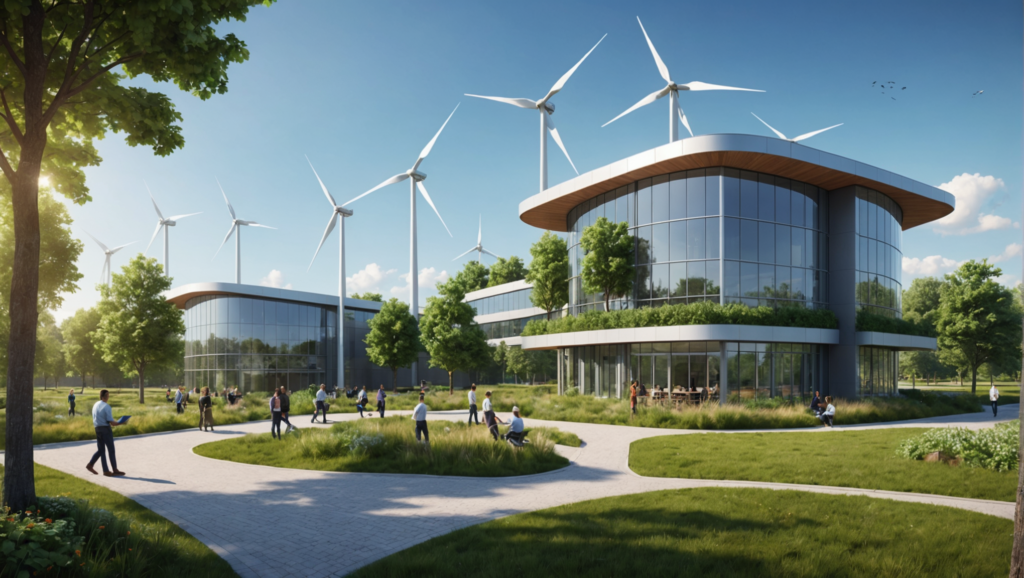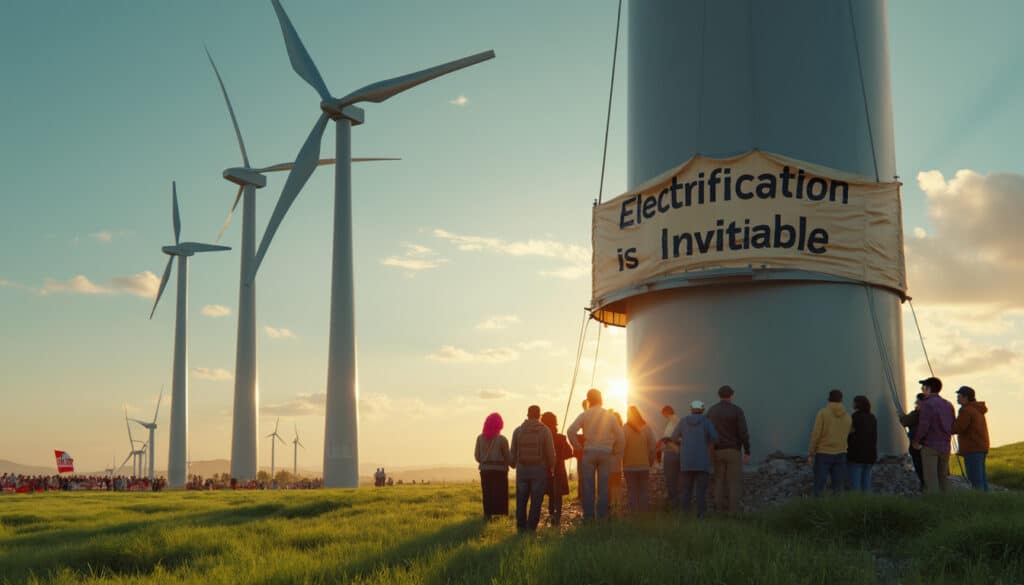In a world where the fight against climate change has become a priority, wind energy stands out as an essential and innovative solution for eco-responsible companies. These pioneers in the sector are not hesitant to incorporate cutting-edge technologies to transform how we produce and consume energy. Far from traditional models, these companies adopt an innovative approach that combines sustainability with economic performance, thus propelling the industry toward new horizons.
Companies harness the power of the wind to design increasingly efficient wind turbines, integrating flexible and recyclable designs while maximizing yields. This movement is accompanied by overflowing creativity, with solutions allowing for a second life for decommissioned turbines. Innovation is not limited to electricity production; it also includes energy storage systems and optimized rotation techniques, making these installations more efficient and less impactful on our environment. Thanks to these initiatives, actors engaged in the energy transition contribute to a greener industry while opening up promising economic perspectives.

In the current energy landscape, wind energy positions itself as an essential source for companies aspiring to combine economic performance with ecological responsibility. Technological advancements, a growing environmental awareness, and evolving regulatory standards encourage companies to turn to renewable solutions. But how do they manage to innovate in this sector while reducing their carbon footprint and optimizing their energy costs?
Eloquent figures: the economic impact of wind energy
To understand the growing success of wind energy, it is essential to analyze the figures. In 2022, wind energy generated nearly 1,500 terawatt-hours of electricity worldwide, representing about 8% of total production. In Europe, this share even reaches 13%. Reports indicate that an average wind turbine of 50 kW can produce up to 65,000 kWh per year, allowing companies to achieve significant savings on their electricity bills.
Moreover, the growth of the wind industry has given rise to a dynamic market. In 2023, according to recent studies, global investments in wind energy reached the threshold of 90 billion dollars. This demonstrates the growing interest of companies in this renewable energy source. Pioneer companies like Océanide are experimenting with new technologies, such as floating offshore wind turbines, which, while maintaining their efficiency, open economically viable perspectives in areas previously difficult to access for wind exploitation.
Innovation at the heart of eco-responsible strategies
Eco-responsible companies adopt innovative approaches to integrate wind energy into their operational model. In this context, flexibility and adaptability are essential. For instance, the startup Flexeole offers flexible wind turbines that adapt to the specific requirements of a business while maximizing energy production. This innovative capacity makes it a key player for energy autonomy, allowing companies to reduce their dependence on often unreliable traditional electricity networks.
At the same time, the recycling phase of wind turbines highlighted by some companies deserves mention. Every year, thousands of wind turbines reach the end of their life, and companies must be creative to prevent these resources from depreciating. Initiatives involve repurposing the blades and reinventing them into new products. This approach contributes to a circular economy while protecting the environment.
Intermediate energy storage and intelligent management systems, such as those developed by various Green Tech companies, also enhance the appeal of wind energy. By integrating storage batteries, these systems can optimize the use of wind energy produced during peak periods, thus ensuring continuous availability.
INCROYABLE
— Fabien Bouglé (@FabienBougle) April 24, 2024
Les bizzareries de la filière #éolienne continuent…
"Énergie éolienne : les mystères de l’AO5 et le syndrome chinois"
par @EricSartori3
https://t.co/iHnU6x8t72
Case studies: companies leading the way
Companies like Portland General Electric have seen their energy transition transform into remarkable success thanks to wind energy. By diversifying its renewable energy projects, it has not only met growing demand but also strengthened its market position. In 2023, this company reported that 40% of its electricity supply now comes from wind, reducing its dependence on fossil fuels and supporting sustainability goals.
Another notable example is provided by Mingyang’s OceanX, which recently set a record with its floating wind turbine. This achievement highlights how innovation continues to revolutionize the wind sector, increasing production capacities while minimizing environmental impact. To learn more about their work, check out their recent advancement here: Mingyang’s OceanX.
Finally, public markets are also starting to look towards wind energy. Companies seeking contracts must now consider their renewable energy envelope. A report indicates that local authorities’ adoption of wind energy could increase by 25% by 2025, thus opening doors for partners interested in ecological impact.
These examples demonstrate that by creatively integrating wind energy, companies not only improve their carbon footprint but also harness resources that can drive them toward financial success. By adopting a proactive approach, they position wind energy not as a cost, but as a competitive advantage. Companies must therefore explore the opportunities that wind energy presents and take a step toward a sustainable and prosperous future.

FAQ
What is wind energy? Wind energy is a form of renewable energy obtained by converting the kinetic energy of the wind into electricity using wind turbines.
How do companies use wind energy? Companies harness wind energy to reduce their electricity costs, decrease their carbon footprint, and participate in sustainable energy transition.
What are the benefits of wind energy for companies? Wind energy allows companies to lower their energy bills, increase their energy autonomy, and improve their brand image as eco-responsible actors.
Do eco-responsible companies participate in research and development in the wind sector? Yes, they invest in research and development to design innovative technologies, such as more efficient wind turbines and energy storage systems.
How does wind energy contribute to corporate sustainability? With its low environmental impact, wind energy contributes to sustainability by reducing greenhouse gas emissions and preserving natural resources.
Can companies recycle end-of-life wind turbines? Yes, many companies are implementing recycling and reuse programs to minimize waste generated by wind turbines.
What innovations are related to wind energy? Companies are developing concepts for flexible wind turbines, recyclable blades, and decarbonized infrastructures to improve the efficiency and sustainability of wind energy.
Do wind turbines impact biodiversity? Eco-responsible companies are taking measures to minimize the impact of wind turbines on biodiversity by incorporating environmental impact studies into their projects.
How can wind energy meet the growing energy demand? By developing new wind farms and integrating storage solutions, wind energy can help meet energy demand while ensuring clean and renewable production.
What regulations support wind energy? Many countries are implementing regulations and financial incentives to encourage the establishment of wind energy projects and promote the transition to renewable energy sources.
Articles similaires
Thank you!
We will contact you soon.














